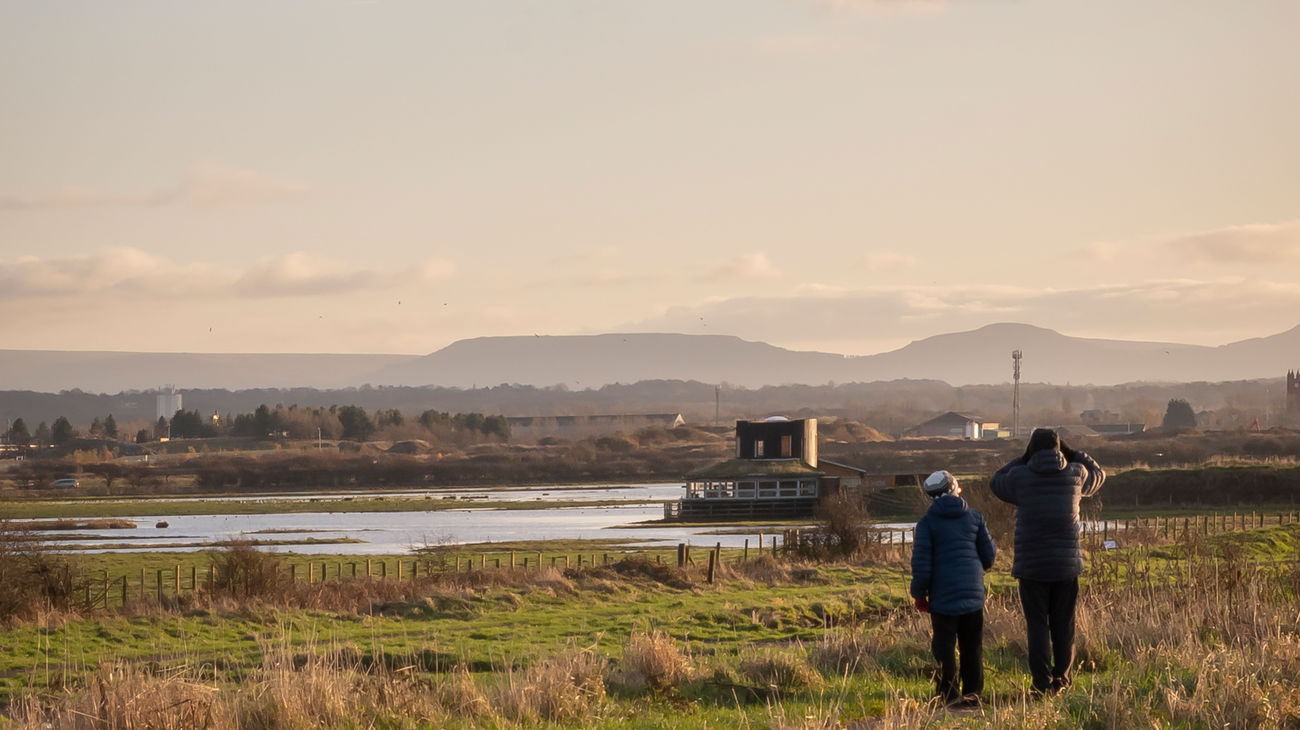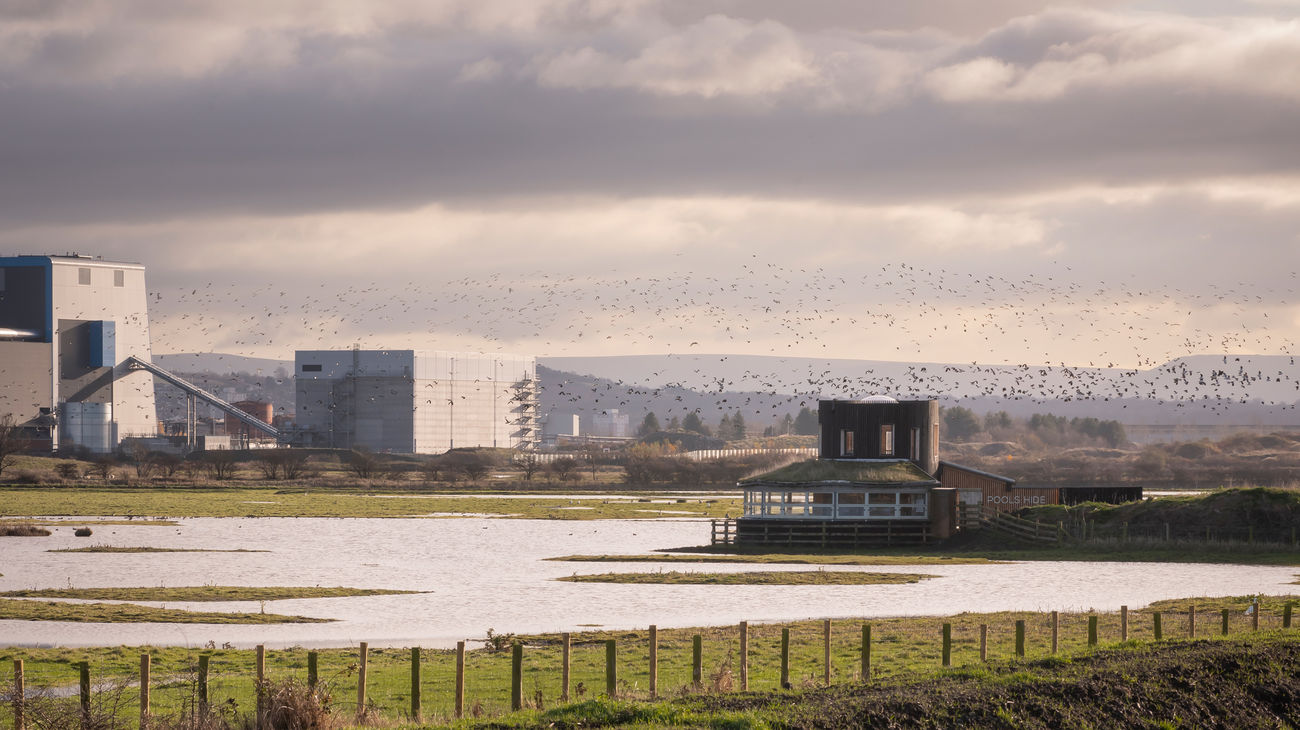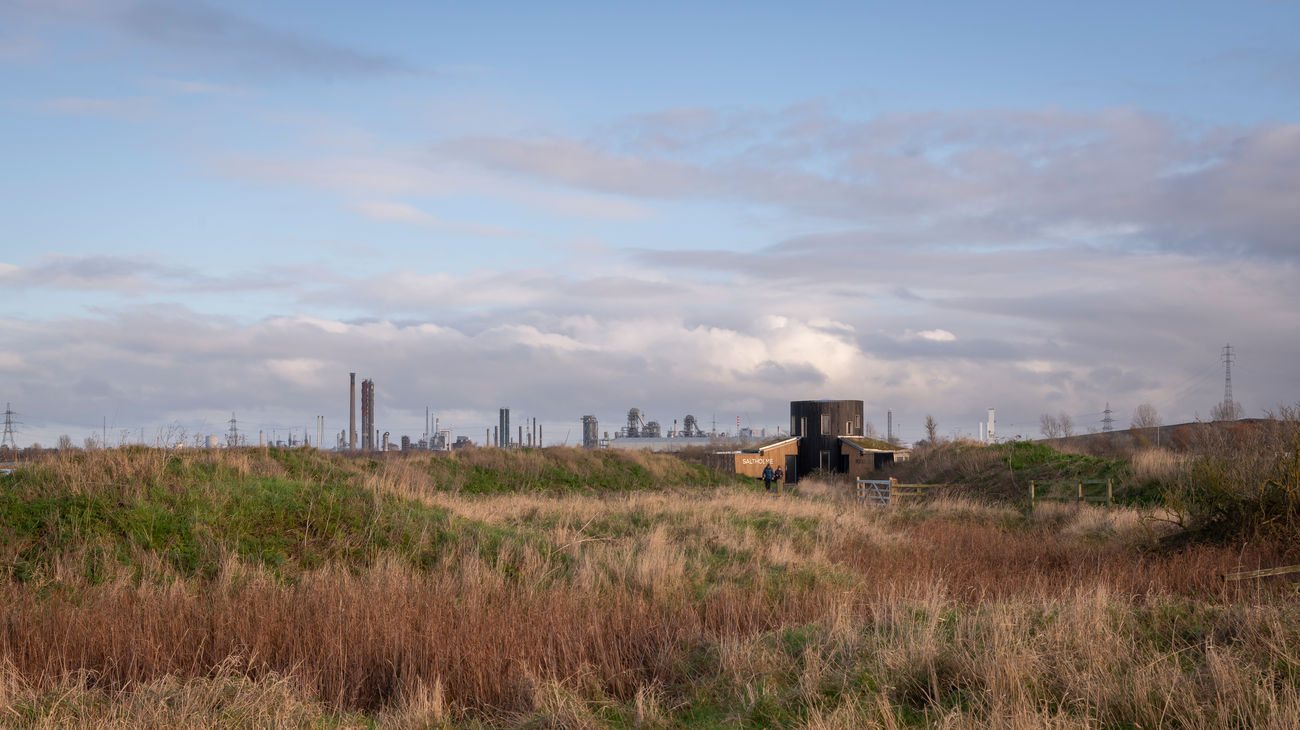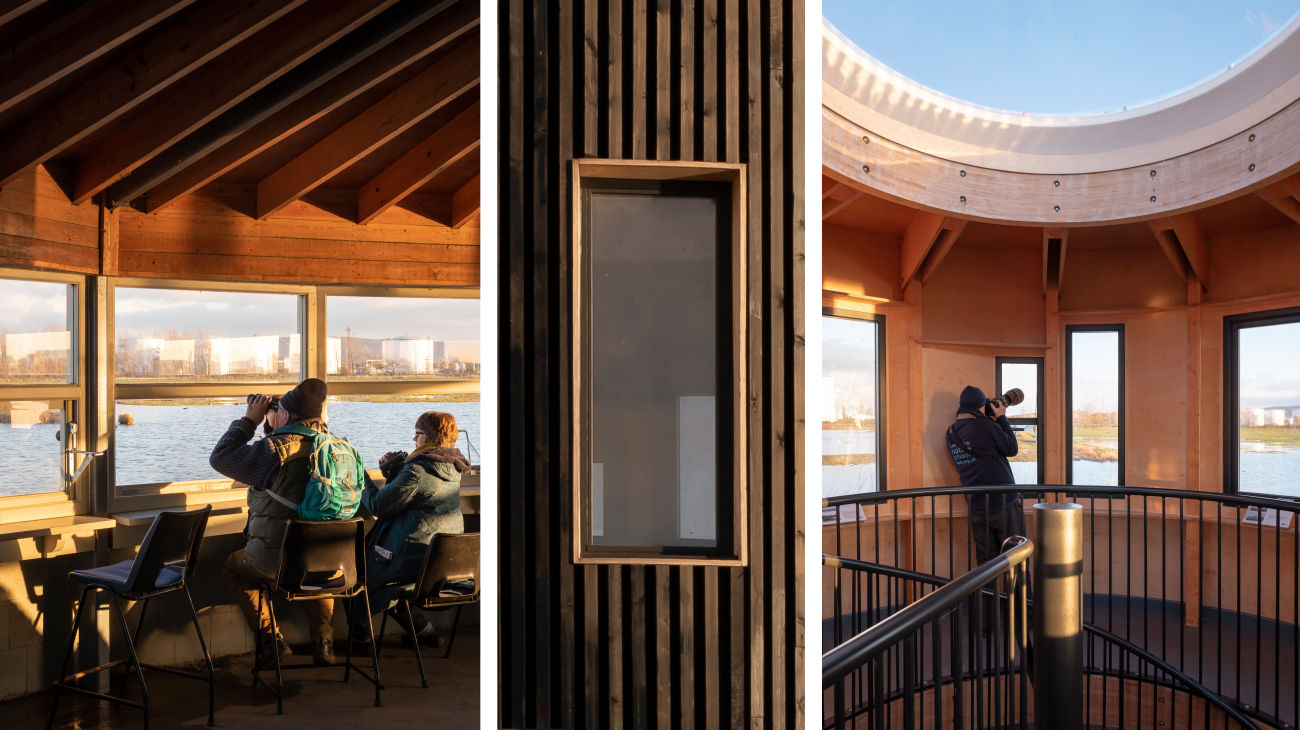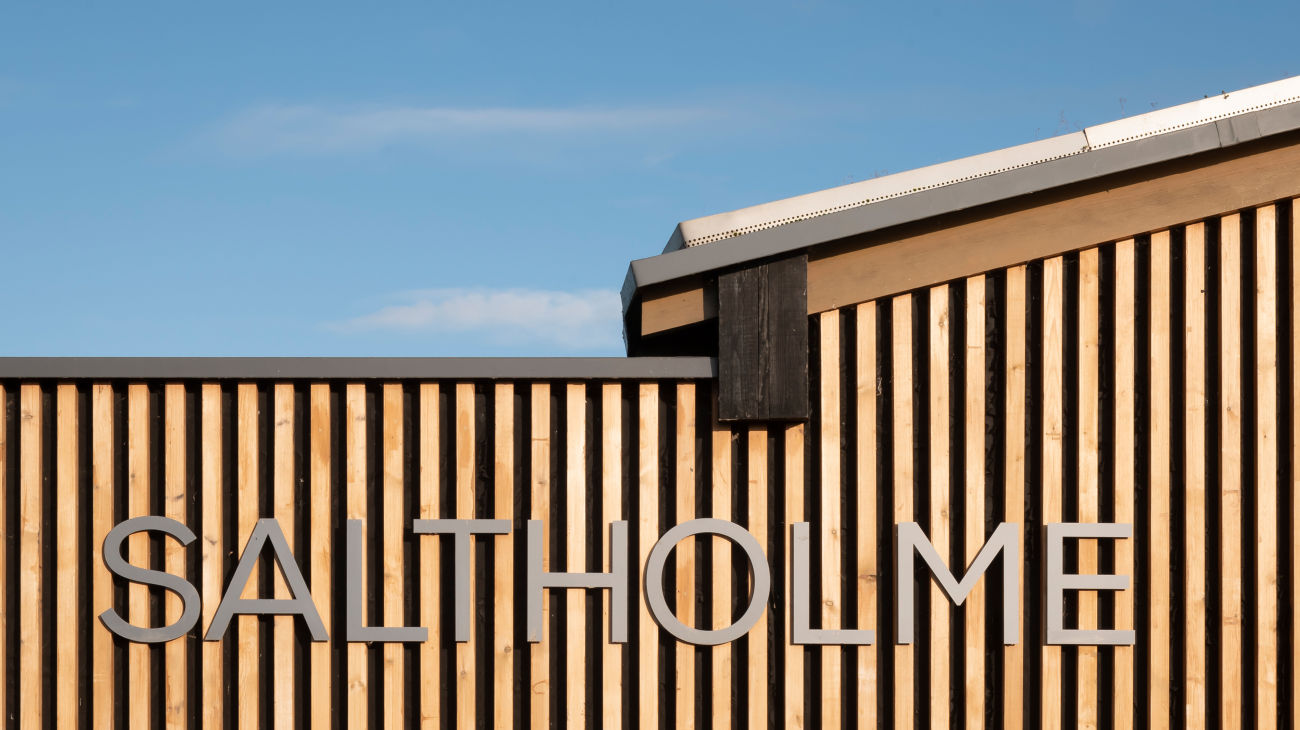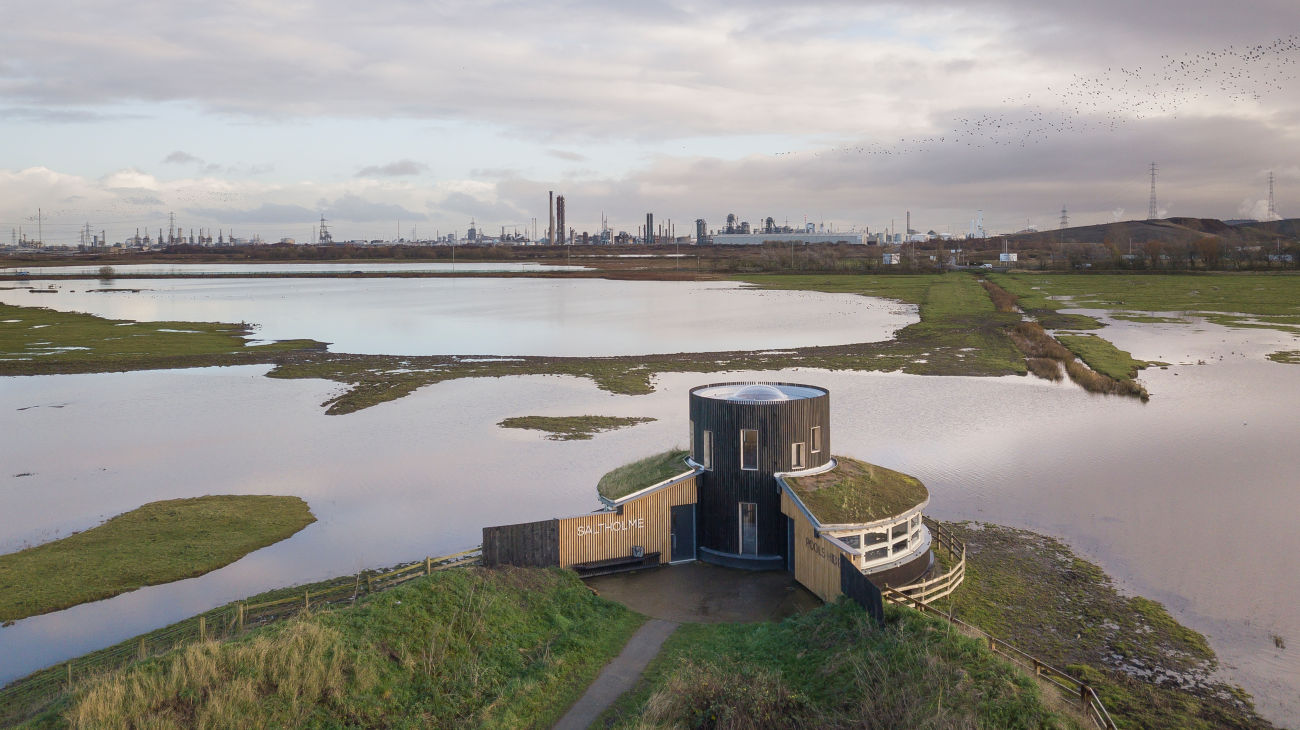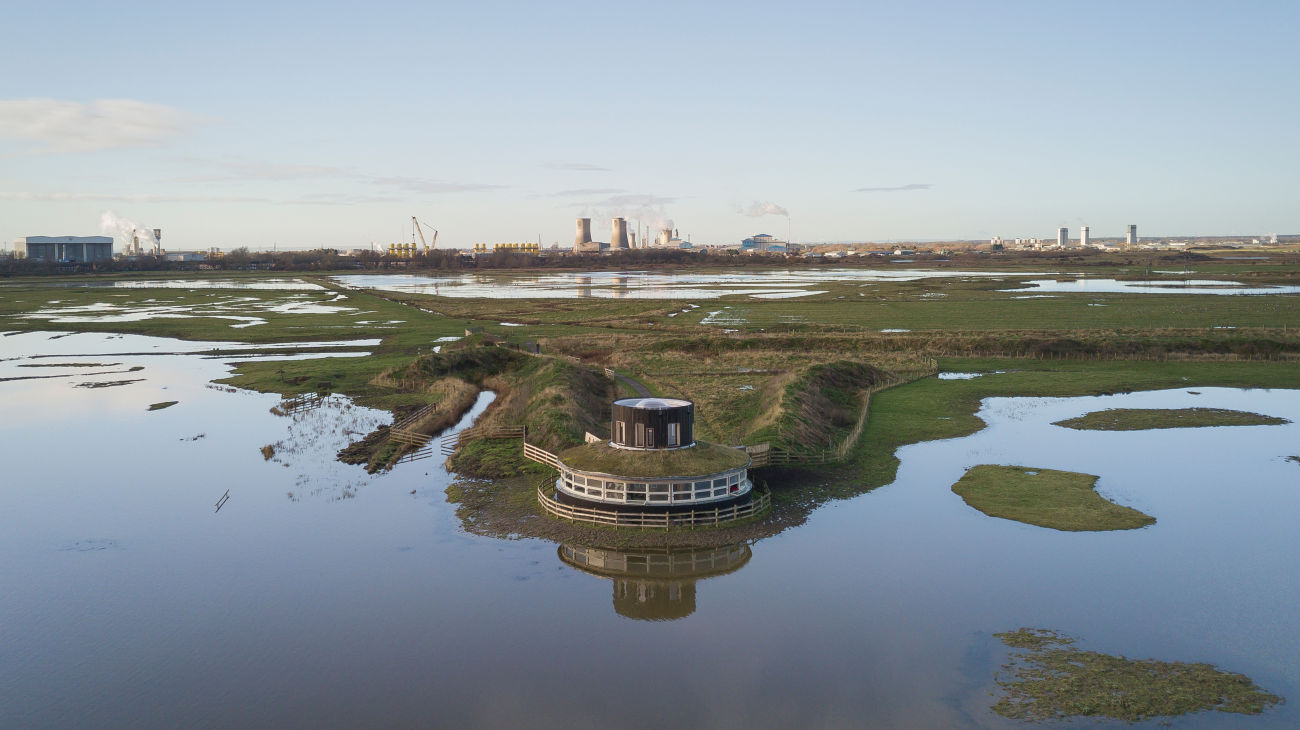Saltholme Pools Hide
Completed: 2019
Client: The Royal Society for the Protection of Birds
Awards:
Civic Trust Awards 2021 – Winner
RIBAJ MacEwen Award 2021 – Shortlisted


Saltholme Pools is the retrofit of a dilapidated bird hide in the North-West of England, set amidst rich wetland habitat surrounded by the unique juxtaposition of heavy clusters of Teesside industry. Designed by Child Graddon Lewis for the RSPB, the project has transformed a utilitarian and unwelcoming building into a popular community asset and landmark location – all despite significant budget and site constraints.
The roots were borne by an understanding of the enormous potential for both the site and even its existing structure: an uninspiring circular breeze-block and steel frame with solid concrete base. Child Graddon Lewis immediately sought to maximise all elements of the existing fabric, punching through the breeze-block walls and utilising natural materials such as birchwood ply to apply an inviting and tactile interior.
The crowning element, however, is the introduction of a second-storey, inserted at the core of the existing structure and now allowing for full panoramic views of the spectacular surroundings. Alongside providing such an elevated position to experience the expansive vistas, the new structure incorporates a rooflight to transform a previously drab space into one bursting with natural light throughout.
Intended to harmonise the building and nature as one, a green roof and stained timber cladding – which flickers as the light traces along its surface – the latter being added to the exterior. New signage at the entrance is visible through each step of the scenic approach, inspiring a sense of place. In addition, landscaping to the pools provide more beneficial feeding habitat for wading birds and breeding habitat.
Despite logistic challenges, the professional team showcased an intensive approach towards collaboration and communication to deliver this project. The result is a cherished community asset that now attracts a larger demographic of visitors to this unique site beyond the avid birdwatcher – including local schools and groups.

